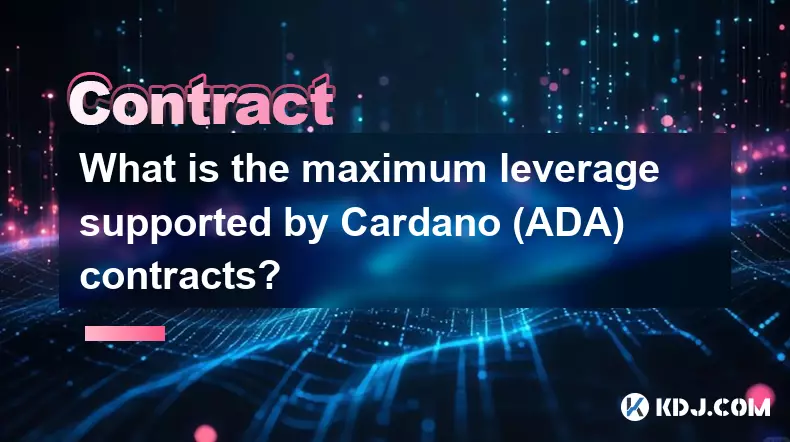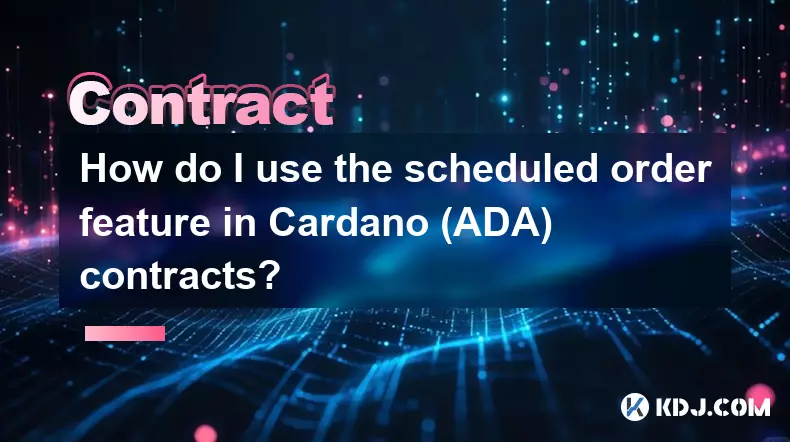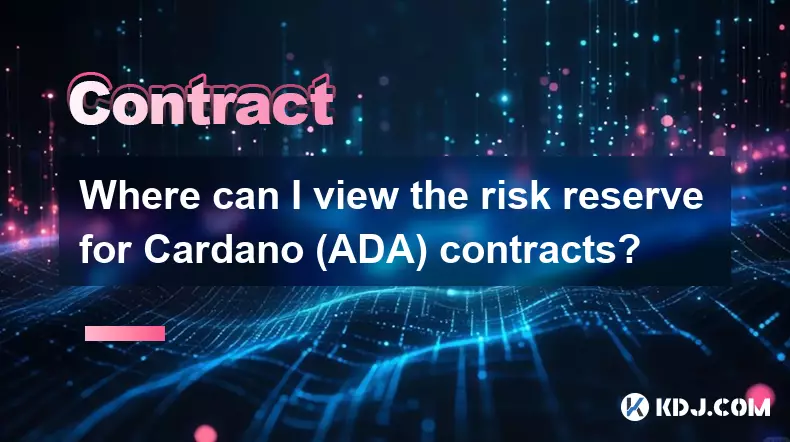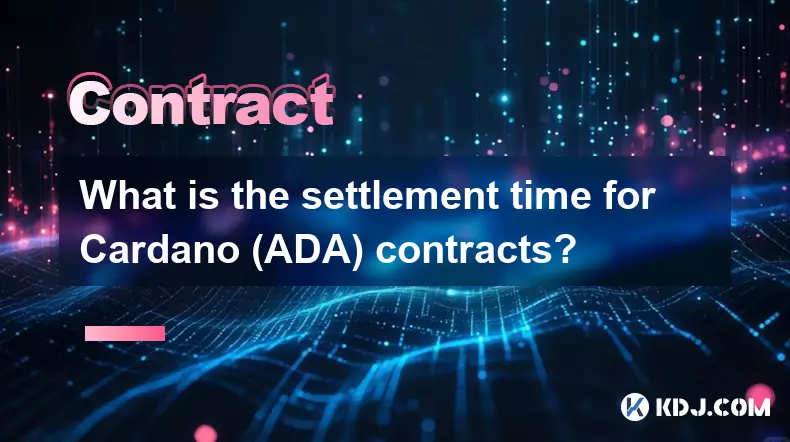-
 bitcoin
bitcoin $114779.865156 USD
2.30% -
 ethereum
ethereum $4226.519789 USD
2.39% -
 tether
tether $1.000545 USD
0.04% -
 xrp
xrp $2.890223 USD
0.92% -
 bnb
bnb $1030.029301 USD
2.95% -
 solana
solana $212.824944 USD
1.69% -
 usd-coin
usd-coin $0.999757 USD
0.01% -
 dogecoin
dogecoin $0.234961 USD
-0.27% -
 tron
tron $0.337174 USD
0.42% -
 cardano
cardano $0.804783 USD
0.09% -
 hyperliquid
hyperliquid $45.748770 USD
-2.85% -
 chainlink
chainlink $21.699170 USD
0.82% -
 ethena-usde
ethena-usde $1.001452 USD
0.08% -
 avalanche
avalanche $30.237800 USD
1.14% -
 stellar
stellar $0.372604 USD
1.52%
What does a Bitcoin contract refer to
Bitcoin contracts are legally enforceable agreements that govern the exchange of Bitcoin, outlining terms such as price, delivery date, and payment method, and ensure secure and efficient Bitcoin transactions.
Nov 07, 2024 at 05:20 pm

What does a Bitcoin contract refer to?
Introduction:A Bitcoin contract is a legally binding agreement that governs the exchange of Bitcoin (BTC), a decentralized digital currency, between two or more parties. These contracts outline the terms and conditions of the transaction, including the price, delivery date, payment method, and other relevant details. Bitcoin contracts play a crucial role in facilitating the secure and efficient transfer of BTC.
Types of Bitcoin Contracts:There are several types of Bitcoin contracts, each designed for specific purposes:
- Bitcoin Purchase Contracts: These contracts document the agreement to buy or sell a specified amount of BTC at a set price.
- Bitcoin Futures Contracts: These contracts allow parties to lock in a price for the sale or purchase of BTC at a future date.
- Bitcoin Options Contracts: These contracts grant the holder the right, but not the obligation, to buy or sell BTC at a specified price within a set period.
- Bitcoin Lending Contracts: These contracts involve the loan of BTC between parties, often with an agreed-upon interest rate and repayment schedule.
The legal validity of Bitcoin contracts varies depending on the jurisdiction. In many countries, Bitcoin is recognized as a form of property, and contracts related to its transfer are generally enforceable by law. However, some jurisdictions have yet to establish a clear legal framework for Bitcoin transactions.
Advantages of Bitcoin Contracts:- Transparency: Bitcoin contracts are recorded on the blockchain, ensuring transparency and immutability.
- Security: The blockchain's encryption and consensus mechanisms provide a high level of security for contract execution.
- Efficiency: Contracts are processed and settled quickly using Bitcoin's distributed ledger technology.
- Dispute Resolution: Bitcoin contracts can facilitate easier dispute resolution due to the immutable and auditable nature of the blockchain.
- Identify the Parties: Clearly identify the parties involved in the contract and their respective roles.
- Specify the Subject Matter: Define the amount of BTC being exchanged, the price, and the date of transfer.
- Determine the Payment Method: Specify the method of payment, such as Bitcoin or another currency.
- Set Up Delivery and Risk Transfer: Stipulate the delivery method, risk transfer conditions, and any escrow arrangements.
- Include Performance Obligations: Outline the obligations and responsibilities of each party, including any warranties or guarantees.
- Resolve Disputes: Establish a dispute resolution mechanism, such as arbitration or mediation.
- Legal Compliance: Ensure that the contract complies with applicable laws and regulations governing Bitcoin transactions.
Bitcoin contracts serve as essential tools for facilitating secure and efficient transactions in the Bitcoin ecosystem. By understanding their legal implications and following proper drafting procedures, parties can minimize risks and ensure the validity of their agreements. The legal frameworks surrounding Bitcoin contracts are continuously evolving, and it is important to stay informed about any updates or changes.
Disclaimer:info@kdj.com
The information provided is not trading advice. kdj.com does not assume any responsibility for any investments made based on the information provided in this article. Cryptocurrencies are highly volatile and it is highly recommended that you invest with caution after thorough research!
If you believe that the content used on this website infringes your copyright, please contact us immediately (info@kdj.com) and we will delete it promptly.
- AI Training's Energy Crisis: Can Decentralization with Greg Osuri Offer a Solution?
- 2025-09-30 20:45:14
- Crypto Presales: Unlocking Potential 'Buy Now' for 'Presale Gains'
- 2025-09-30 21:05:15
- Prenetics, Danny Yeung, and Token 2049: A Bold Bitcoin Strategy
- 2025-09-30 20:45:14
- Bitcoin Investment in 2025: Navigating the Crypto Landscape
- 2025-09-30 20:50:11
- Pi Network Price Prediction & Crypto News: Navigating the Hype in a Utility-Driven Market
- 2025-09-30 21:05:15
- Dogecoin, Pepe Coin, and Remittix: Meme Mania Meets Utility in the Crypto Wild West
- 2025-09-30 20:50:11
Related knowledge

What is the maximum leverage supported by Cardano (ADA) contracts?
Sep 30,2025 at 03:37am
Understanding Leverage in ADA Derivatives Trading1. Leverage in cryptocurrency futures and perpetual contracts allows traders to control larger positi...

How do I use the scheduled order feature in Cardano (ADA) contracts?
Sep 28,2025 at 10:18pm
Understanding Scheduled Orders in Cardano Smart ContractsCardano operates on a proof-of-stakes consensus mechanism and uses the Plutus scripting langu...

Can I modify the leverage of Cardano (ADA) contracts after opening a position?
Sep 30,2025 at 08:19am
Understanding Leverage in Cardano (ADA) Futures Trading1. Leverage allows traders to control larger positions using a smaller amount of capital. In th...

Where can I view the risk reserve for Cardano (ADA) contracts?
Sep 29,2025 at 09:19pm
Risk Reserve Overview in Cardano (ADA) Ecosystem1. The concept of a risk reserve within the Cardano blockchain does not align with traditional central...

How do I enable the "scalping-only" mode for Cardano (ADA) contracts?
Sep 24,2025 at 03:19am
Understanding Scalping Strategies in Crypto Derivatives1. Scalping in cryptocurrency trading refers to executing multiple short-term trades within min...

What is the settlement time for Cardano (ADA) contracts?
Sep 28,2025 at 04:18am
Understanding Cardano's Contract Settlement Mechanism1. Cardano operates on a proof-of-stake consensus model known as Ouroboros, which fundamentally i...

What is the maximum leverage supported by Cardano (ADA) contracts?
Sep 30,2025 at 03:37am
Understanding Leverage in ADA Derivatives Trading1. Leverage in cryptocurrency futures and perpetual contracts allows traders to control larger positi...

How do I use the scheduled order feature in Cardano (ADA) contracts?
Sep 28,2025 at 10:18pm
Understanding Scheduled Orders in Cardano Smart ContractsCardano operates on a proof-of-stakes consensus mechanism and uses the Plutus scripting langu...

Can I modify the leverage of Cardano (ADA) contracts after opening a position?
Sep 30,2025 at 08:19am
Understanding Leverage in Cardano (ADA) Futures Trading1. Leverage allows traders to control larger positions using a smaller amount of capital. In th...

Where can I view the risk reserve for Cardano (ADA) contracts?
Sep 29,2025 at 09:19pm
Risk Reserve Overview in Cardano (ADA) Ecosystem1. The concept of a risk reserve within the Cardano blockchain does not align with traditional central...

How do I enable the "scalping-only" mode for Cardano (ADA) contracts?
Sep 24,2025 at 03:19am
Understanding Scalping Strategies in Crypto Derivatives1. Scalping in cryptocurrency trading refers to executing multiple short-term trades within min...

What is the settlement time for Cardano (ADA) contracts?
Sep 28,2025 at 04:18am
Understanding Cardano's Contract Settlement Mechanism1. Cardano operates on a proof-of-stake consensus model known as Ouroboros, which fundamentally i...
See all articles










































































